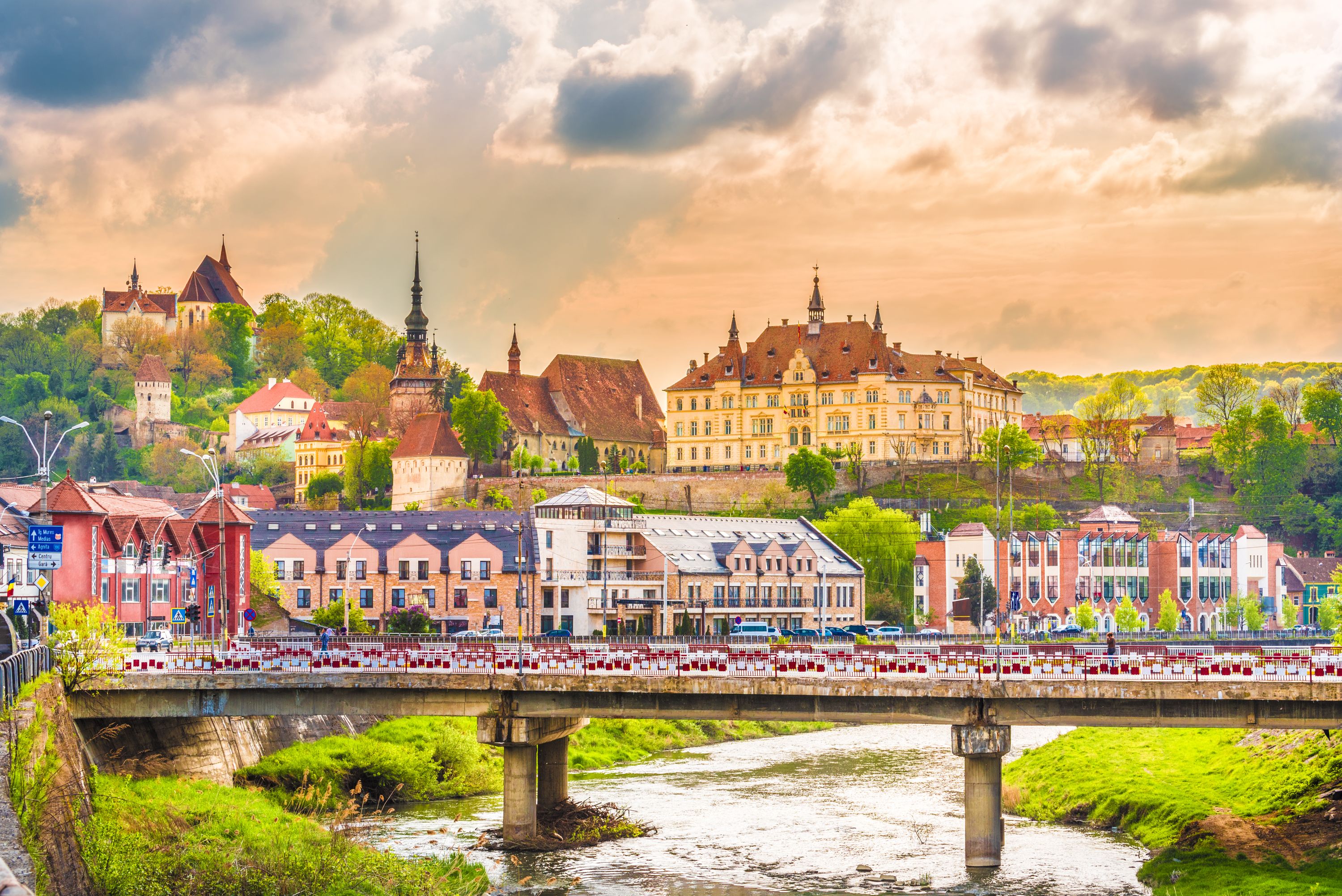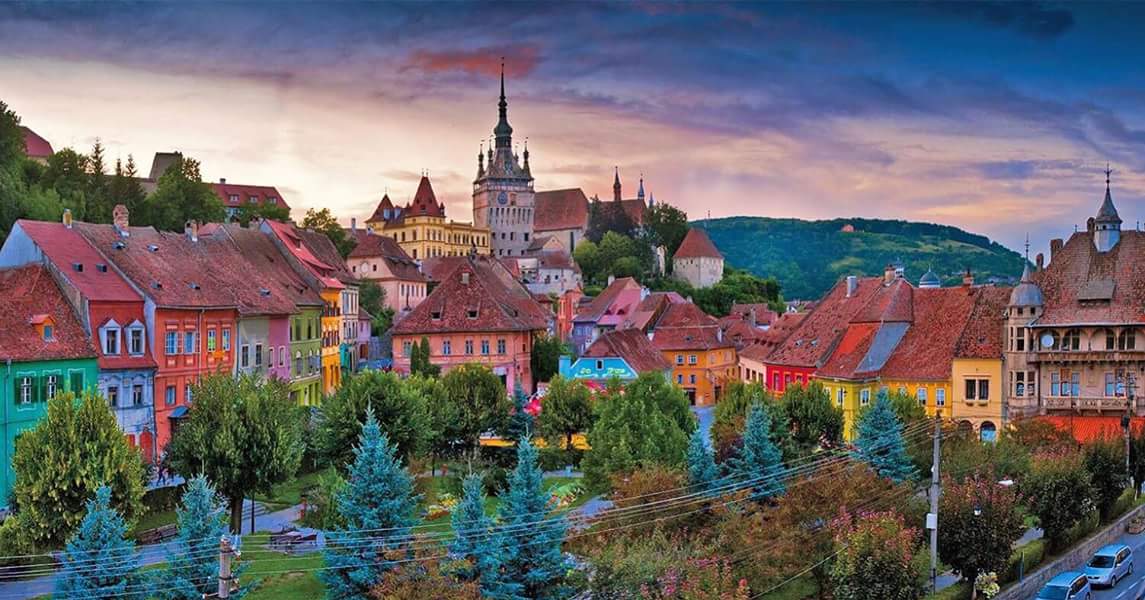



Sighișoara is a city on the Târnava Mare River in Mureș County, central Romania. Located in the historic region of Transylvania, Sighișoara had a population of 23,927 according to the 2021 census. Wikipedia
May to September: Perfect weather for sightseeing and photography.
July: The Medieval Festival brings the citadel to life with costumes, music, and street performances.
Autumn (Sept–Oct): Golden leaves and fewer tourists — magical atmosphere.
Winter is quiet and moody, with snow adding to the fairy-tale look.
By train: Accessible from Brașov, Cluj, or Bucharest (may require connections).
By car: ~2 hours from Brașov, ~5 hours from Bucharest.
On foot: The historic citadel is walkable — no vehicles allowed inside the fortress walls.
Clock Tower (Turnul cu Ceas): Sighișoara’s symbol — climb for panoramic views and visit the history museum inside.
Vlad Dracul House: Allegedly the birthplace of Vlad the Impaler; now a restaurant with a medieval flair.
Covered Staircase (Scara Acoperită): A long, wooden staircase leading to the hilltop school and church.
Church on the Hill (Biserica din Deal): A Gothic church overlooking the town, with ancient frescoes and a crypt.
Citadel Walls and Towers: Walk around the 14th-century fortifications — 9 of the original towers still stand.
Tailors’ Tower and Shoemakers’ Tower: Each guild had its own defense tower!
Wander the colorful streets of the citadel and admire the medieval architecture.
Climb the Clock Tower early for quiet and clear views.
Explore the old graveyard behind the Church on the Hill — peaceful and atmospheric.
Shop for local crafts and souvenirs, including traditional woodwork and embroidery.
Enjoy a slow meal on a terrace in the main square, watching street performers and the world go by.
Historic guesthouses and boutique hotels inside the citadel — full of charm and original features.
Pensions and small hotels outside the walls offer great views and peaceful stays.
Booking ahead is smart, especially during summer festivals or holidays.
Dishes blend Romanian, Hungarian, and Saxon traditions.
Try:
Ciorbă ardelenească (Transylvanian sour soup)
Tochitură (pork stew with polenta and egg)
Papanași (doughnuts with cream and jam)
Several restaurants offer medieval-inspired menus, with candlelit dining inside ancient stone buildings.
Local wines, mulled wine, and homemade liqueurs are popular.
Sighișoara has strong Saxon roots, with a rich guild system and artisan traditions.
It’s a town of legends, ghost stories, and history, deeply tied to Transylvania’s mystique.
Locals take pride in preserving their heritage, crafts, and townscape.
The Medieval Festival and folk celebrations highlight community life and traditions.
Wear comfortable shoes — cobblestones and steep lanes are everywhere.
Avoid peak midday crowds by exploring early or in the evening.
Bring cash for small shops, cafés, and markets.
Stay overnight if possible — the citadel is magical after day-trippers leave.